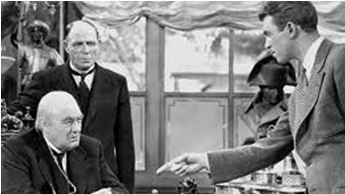
Get Paid to Share Your Expertise
Help shape the future of business through market research studies.
See Research StudiesDo you ever question whether you want to continue doing the same job every day for the next 10 to 15 years?
You are not alone. The numbers of professionals clamoring to do something completely different have risen significantly and continue to grow.
Although it has become common, the turmoil of a mid-life career change has remained the same. Transitioning to a new professional identity can be exciting, but it is also usually fraught with confusion, insecurity, fear and uncertainty. It takes courage and perseverance to change.
Most career changers remember the moment they had an epiphany about the need for a change
Jennifer Rosen (not her real name) realized, as she was lying on her bed in a hotel room during a business trip, that she had to change her life. She was bored and dissatisfied. A COO in a large law firm, she still needed to earn a decent salary, but could live comfortably on less than she was making at the law firm.
Jennifer needed to be doing something that had more meaning. Making a contribution to a larger cause drove her, and she knew she was headed towards a non-profit environment.
What are some initial steps to mapping out a significant career change?
- Manage your own expectations.
- Make a commitment to yourself to embark on this journey with an open mind and an understanding that it will take time and resilience.
- Engage in self-reflection. Any significant career change requires a deeper understanding of one’s inner self. As Herminia Ibarra mentions in her book, Working Identity, it also requires envisioning and experimenting with possible futures. Caution: Do not expect that self-reflection alone will bring success. It won’t. You must take action at some point. Action leads to change.
- Clarify your changing priorities and values. Often times, the desire to change careers stems from a change in priorities and/or values, which is rather common as we grow from one stage of life to another. Think carefully about how your own priorities are changing, and what values are most important to you.
- Take the time to do your research. Explore several possible pathways. Look online and read as much as you can about the types of work and target organizations you might be interested in.
- Make networking a priority. The more you talk with and surround yourself with people who are already involved in the work you are interested in, the more your place in that world will become apparent and possible. Look for mentors and role models, even if you are middle-aged.
- Experiment. Another premise noted by Herminia Ibarra is the necessity to probe and test out experiences that will give you a better sense of where you might fit.
Self -reflection without action will get you nowhere.
By the way, remember Jennifer Rosen?
She is now the COO of a large nonprofit organization in Boston with a mission to transform the lives of low-income women.

 Terry Del Percio
Terry Del Percio